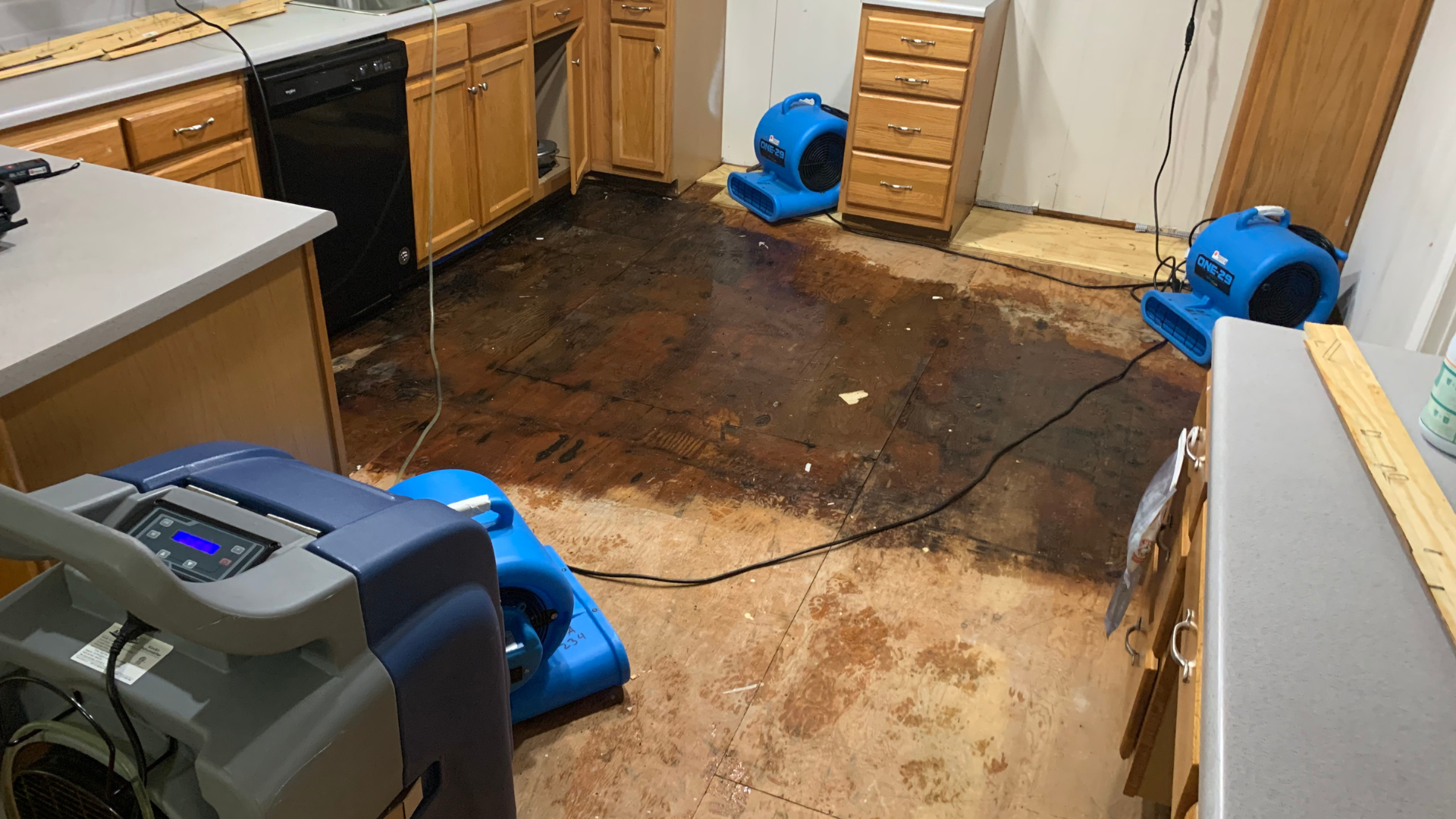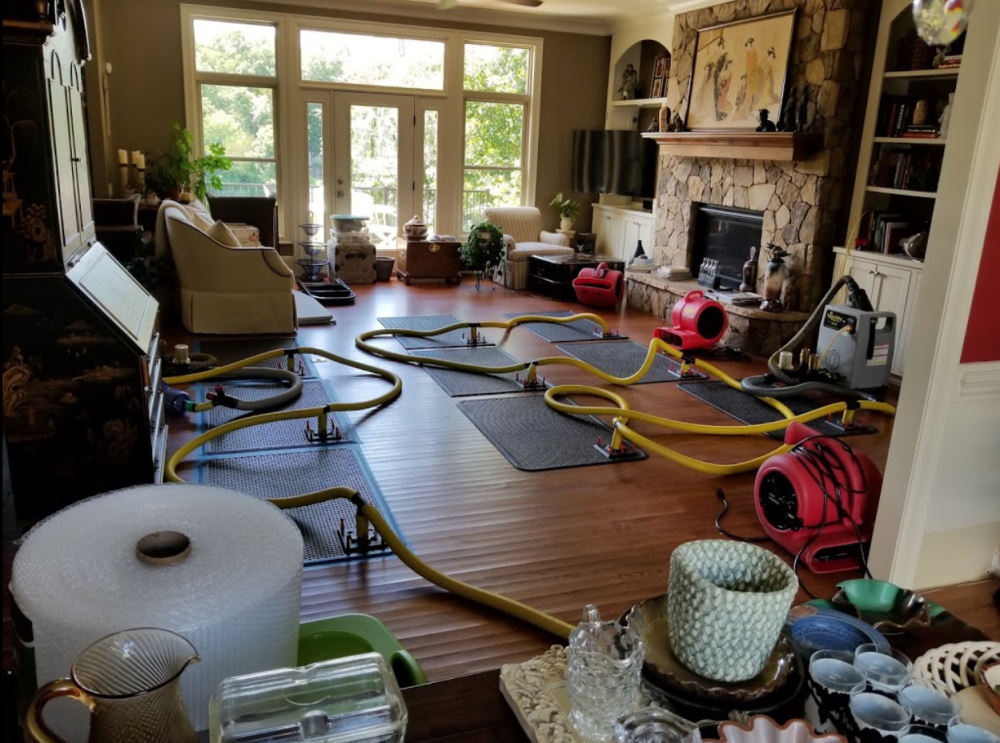Emergency Situation Water Damage Restoration: Swift Action to Minimize More Damages
Water damages can strike unexpectedly and leave destructive effects on services and homes. When faced with such a situation, a swift response is critical to reduce additional damages and prevent possible health hazards. What exactly does emergency water damage restoration require? In this conversation, we will certainly look into the value of instant action, the assessment procedure, the actions included in water extraction and drying, mold and mildew avoidance and removal, and eventually, the remediation of the affected location. By recognizing the seriousness and extensive nature of this process, you will certainly get useful insights right into just how experts tackle emergency situation water damages, guaranteeing a swift and effective feedback.
Relevance of Swift Reaction
Swift feedback is of utmost relevance in water damages remediation to reduce further damages and alleviate potential threats. When water damages happens, whether due to a ruptured pipe, a natural calamity, or any type of other unpredicted event, time is important. The longer water beings in a building, the even more damages it can cause. This is why it is critical to act swiftly and effectively to get rid of the water and begin the restoration procedure.
One of the major factors swift reaction is necessary in water damages restoration is to avoid the growth of mold and mildew and mold. Mold and mildew not just creates more damage to the structure of the building but also positions health and wellness dangers to owners.
In addition, a prompt response can help salvage and restore important items and properties - mold inspection philadelphia. Water damages can be ravaging, particularly when it impacts personal items of monetary or sentimental worth. Performing swiftly allows experts to evaluate the damage and execute appropriate restoration techniques to recover as high as feasible. This not only helps to minimize economic losses yet likewise brings satisfaction to those affected.
Examining the Extent of Damages

Throughout the analysis, reconstruction experts completely analyze the affected location to recognize visible signs of damages, such as water discolorations, distorted materials, and mold and mildew development. They likewise use customized devices to discover covert damages, such as dampness meters and thermal imaging video cameras. This extensive evaluation permits them to precisely determine the level of the damage and develop a customized remediation strategy.
Due to the fact that it assists professionals prioritize their initiatives,Assessing the level of water damage is essential. They can determine locations that need prompt interest, such as standing water elimination and drying, to avoid additional damages and reduce the threat of mold development. They can also figure out the areas that require repairs or replacement, ensuring that no damage goes undetected or neglected.

Water Removal and Drying Refine
The water extraction and drying procedure is a crucial step in water damages reconstruction, as it involves the removal of excess water and the complete drying out of the affected area to stop more damage and reduce the danger of mold and mildew development. After assessing the extent of the water damage, the next action is to draw out the water from the damaged location.
Once the excess water has been extracted, the drying process begins. This step is necessary in protecting against second damages, such as architectural damages and the development of mold and mildew and mildew. High-powered fans and dehumidifiers are used to distribute air and eliminate wetness from the air and surfaces. The drying process may take a number of days, depending upon the degree of the water damage and the materials included.
It is crucial to make sure that the afflicted area is completely dry prior to waging any type of repair services or restoration. Failure to extensively dry out the area can result in long-term concerns, consisting of weakened structures, stuffy smells, and the growth of mold and mildew and mold. Professional water damages remediation firms utilize moisture discovery devices to ensure that the damaged area is entirely dry before proceeding to the next action.
Mold Prevention and Removal
Efficient mold avoidance and remediation are essential in water damage repair to make certain the safety and honesty of the afflicted location. mold remediation philadelphia. When water damages occurs, whether from a ruptured pipe, flooding, or a leaking roof, it produces a perfect atmosphere for mold and mildew growth. Mold and mildew can begin to establish within 24 to 2 days after water damages, and if left neglected, it can spread out rapidly and trigger significant health dangers
To prevent mold growth, it is important to deal with water damage immediately. The very first action is to determine and fix the resource of the water invasion.
In cases where mold growth has already occurred, removal is essential to remove the mold and mildew and stop its return. This includes the cautious removal and disposal of afflicted materials, such as drywall or carpet, to ensure that all traces of mold are eradicated. It is very important to keep in mind that mold and mildew removal ought to be brought out by experts who have the necessary training and tools to securely manage and remove mold and mildew.
Bring Back the Affected Area

Firstly, it is important to completely dry the area to avoid any type of additional damage and to prevent the growth of mold and mildew. This may involve making use of specialized drying out tools, such as dehumidifiers this hyperlink and industrial-grade followers, to eliminate all wetness from the afflicted surfaces.
Once the area is completely dry, the repair procedure can begin. This may involve changing or repairing damaged architectural components, such as flooring, ceiling, or drywall ceramic tiles. It is necessary to deal with any underlying concerns that might have triggered the water damage, such as dripping pipelines or defective plumbing, to protect against future occurrences.
Furthermore, bring back the afflicted area may also consist of painting walls, changing damaged fixtures, and extensively cleansing and sanitizing the room. This makes sure that not only is the location structurally audio, but it is additionally visually pleasing and safe for tenancy.
Final Thought
Assessing the degree of damages allows for efficient water removal and drying processes to be carried out. Overall, timely action and detailed remediation procedures are vital to mitigating the unfavorable influences of water damages.
Swift response is of utmost value in water damages reconstruction to minimize additional damage and alleviate possible risks.During the evaluation, repair specialists extensively examine check it out the affected area to identify visible indications of damage, such as water spots, distorted products, and mold and mildew development.The water removal and drying out procedure is a critical action in water damages reconstruction, as it involves the elimination of excess water and the thorough drying of the affected area to prevent further damage and mitigate the threat of mold and mildew development. After analyzing the level of the water damages, the next step this link is to extract the water from the affected location.Reliable mold and mildew avoidance and remediation are essential in water damage restoration to ensure the safety and security and honesty of the damaged area.